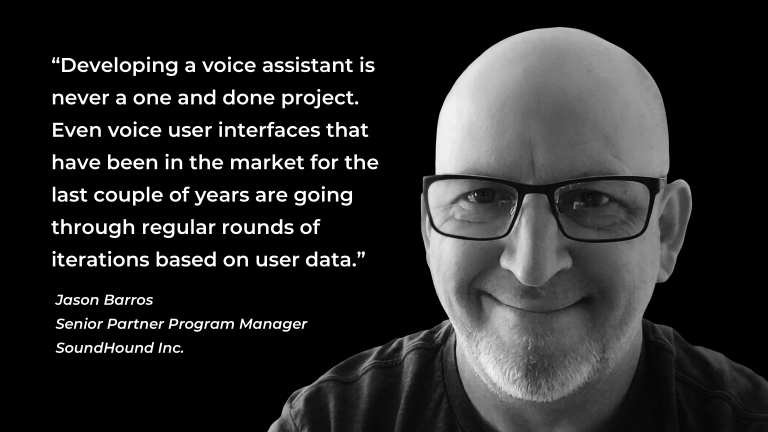The data you collect at various stages of development can be used to train future models and create an exceptionally robust voice service. You’ll want to perform a variety of experiments in collaboration with your voice AI provider to ensure that the data is robust and can be used to improve your voice model.
5. Set realistic time frames for developing a voice assistant
If you’re exploring the idea of developing a voice user interface internally without the help of an outside voice AI platform provider, you should know that most companies who take this path spend a lot of time trying to determine their approach to voice. While that might be time well spent, in the end teams are no closer to a final product than when they started.
Partnering with a voice AI platform provider, like SoundHound Inc., removes the burden of developing a voice assistant from scratch, and allows your teams to stand on the shoulders of our 15 years of voice AI technology development. We’ve already put a lot of the trials and tribulations of voice AI development behind us.
If you are exploring doing something internally, I highly suggest reaching out to people in the community to get a realistic sense of what it takes to put a voice assistant together. Even with companies like ours, the time to get a proper voice user interface ready for the market is significant.
Developers can explore Houndify’s independent voice AI platform at Houndify.com and register for a free account. Want to learn more? Talk to us about how we can help you bring your voice strategy to life.
Jason Barros is the senior partner program manager at SoundHound Inc. He’s been working in the tech industry for over 12 years and has over 25 years of leadership and management experience.









